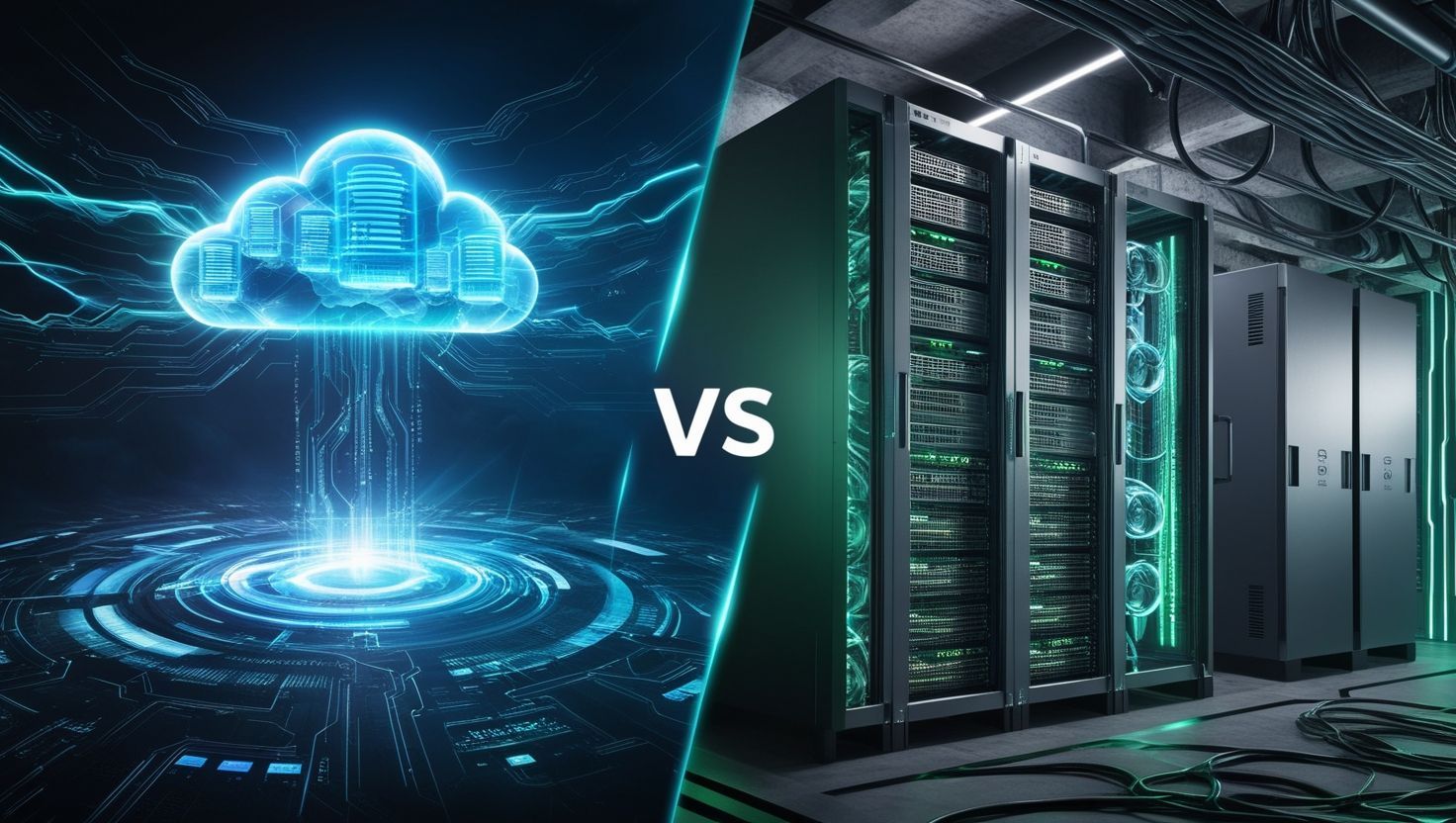Cloud vs. on-premises server – what to choose?
Where should a company store its data – in the cloud or on on-premises servers? The answer to this question can have a significant impact on business performance, security, and costs. Both solutions have their advantages and disadvantages, and the choice depends on the company's specifics, needs, and long-term business goals. Let’s take a closer look at both options.
Cloud computing
Advantages:
- Scalability and flexibility. Cloud computing allows businesses to adjust IT resources according to their current needs. If a company is growing dynamically or operates seasonally, the ability to scale up or down is very useful. Unlike on-premises servers, additional resources such as storage space or computing power can be easily added in the cloud.
- Access from anywhere. With cloud solutions, employees can access data and applications from anywhere in the world as long as they have an internet connection. This is especially important in the era of remote work and business globalization.
- Lower initial costs. Migrating to the cloud requires lower upfront investments compared to purchasing and configuring on-premises servers. Companies pay only for the resources they actually use, making IT budget management more efficient.
Disadvantages:
- Requires a stable internet connection. A lack of internet access can disrupt operations, which may be problematic for companies in areas with weak network infrastructure.
- Data security concerns. Although cloud providers implement advanced security measures, some companies fear losing control over their data. Choosing a reliable provider is crucial for minimizing risks.
- Long-term costs. Over time, cloud subscription costs may exceed the investment required for on-premises servers.
On-premises server
Advantages:
- Full control over data. Owning an on-premises server gives a company complete control over its data, which is essential for industries with strict security requirements, such as banking, insurance, and healthcare.
- Less dependency on third party vendors. Full control over your infrastructure and application availability.
- Customization. On-premises servers allow full customization of systems and applications to meet business needs, which can be more challenging with cloud solutions.
Disadvantages:
- Higher maintenance costs. Purchasing, configuring, and maintaining on-premises servers require significant financial investments. Additional costs include electricity, cooling, space rental, and hiring IT specialists.
- Limited scalability. If a company’s needs grow, adding new resources may require purchasing additional hardware, which is more expensive and time-consuming than scaling in the cloud.
- New challenges. Managing an on-premises IT infrastructure requires addressing various risks, such as server monitoring, regular updates, and responding to system vulnerabilities.
Which one to choose?
The decision between cloud and on-premises servers depends on the company's specifics, needs, and priorities. Businesses that value flexibility, low initial costs, and remote work capabilities often choose the cloud. On the other hand, organizations prioritizing full data control and independence from the internet may opt for on-premises servers.
Hybrid approach
More and more companies are adopting a hybrid model that combines the benefits of both solutions. The cloud can be used to store less sensitive data and provide access to applications, while critical information remains on on-premises servers. This approach offers flexibility and cost optimization while maintaining security.
How can we help?
At dcs.pl, we offer various cloud solutions, including private clouds like HostedWindows ensuring security and flexibility, additionally, we provide expert migration services across two environments, ensuring a seamless transition and minimal downtime. So whether it's cloud, on-premises or a hybrid model you can be sure that your IT infrastructure will be modern, secure, and tailored to your business needs. Contact us to learn more!


0 komentarze